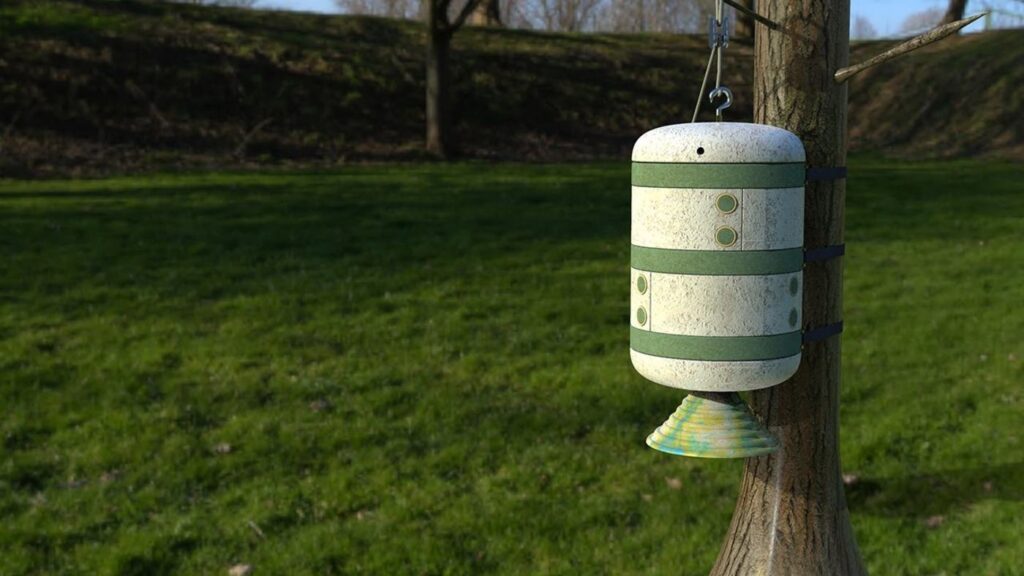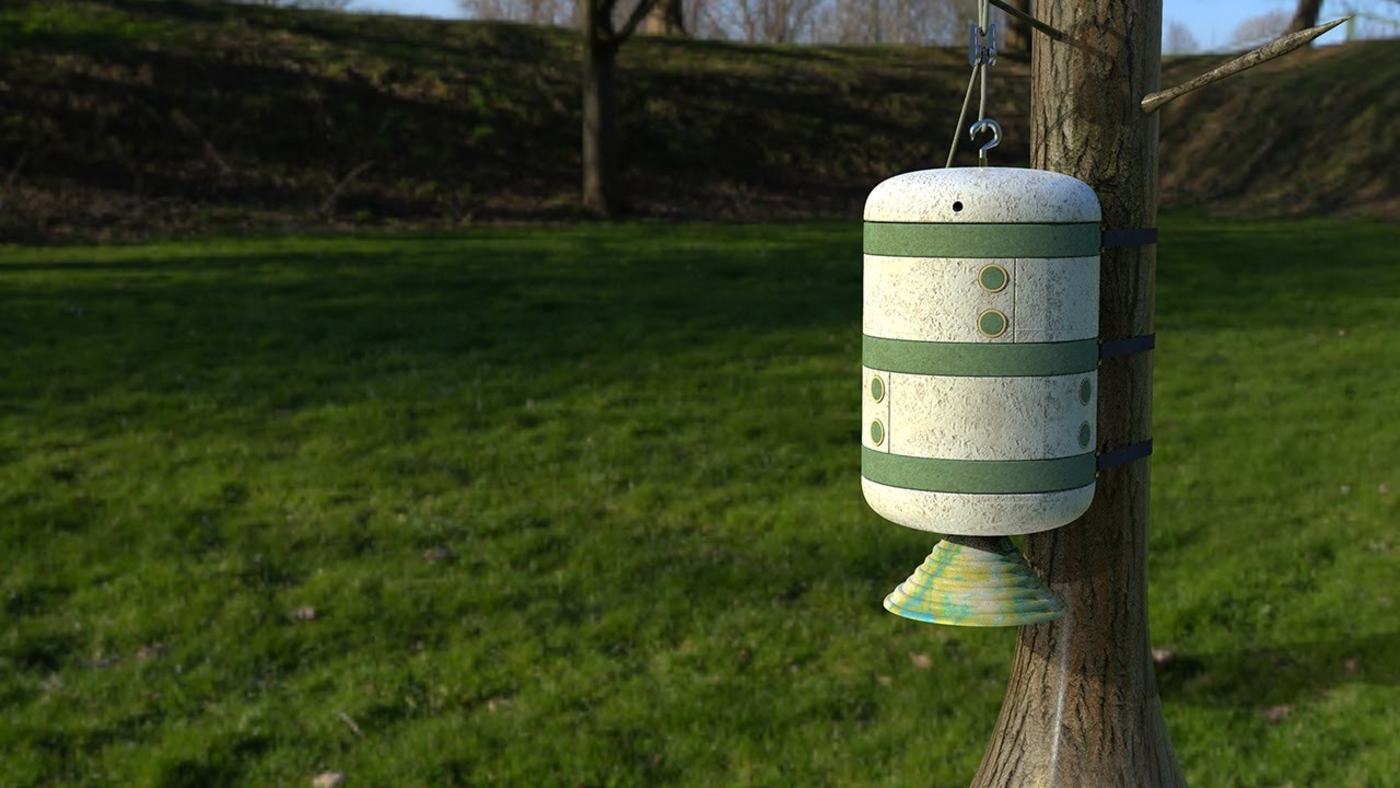
An Irish designer is hoping to save her island’s native bee species by creating special hives grown from mushrooms.
Placing on the world Top 20 for the James Dyson Design Award for Sustainability, the prototype hive, called Econooc, is being designed specifically by Niamh Damery for the Irish black bee, as well as to get more people involved in conservation.
Plummeting bee populations in Ireland are not only the result of habitat loss or pesticide use as is common elsewhere, but also because for years the country imported bee populations from warmer climates that have a hard time surviving the Irish weather.
Those introduced species bred with native bees to create hybrids that invaded black bee hives, but that still couldn’t cope with the weather. Econooc hives are grown from mycelium spores spread onto an agricultural byproduct, like wood shavings or straw, called a substrate.
Mycelium is the fibrous underground structure the supports the fruiting body—the mushrooms we see on walks—and is emerging as a potential super design tool. GNN has reported on its use to make things as varied as bricks, canoes, and even coffins. The mixture of mycelium and substrate is stuffed into a mold to mimic the natural structure of a beehive, before going in the oven to preserve the shape.
MORE: Eating Mushrooms a Few Times a Week Could Dramatically Reduce Dementia Risk, Says 6-Year Study
Econooc simulates the hollow of a native tree where black bees tend to build their hives in order to shelter themselves, their food, and their young from the rain. A landing pad where owners can watch bee activity in and out of the hive is made from recycled plastic, while the straps that secure it to the tree are old car seatbelts, making it almost entirely recycled or otherwise sustainable.
Damery also worked to create a calendar, which will be included in the purchase of every hive, that each month educates the owner on the different native plants growing in that period that require Irish black bees for pollination, as well as what exactly is happening inside the hive during that season.
CHECK OUT: Bees Actually Bite Plants to Make Them Flower Early – Surprising Scientists
In addition, once the month is finished, the owner can rip the calendar’s bottom part off, which is filled with wildflower seeds, and place it under an inch of soil in their garden to further aid in the efforts to save black bees and other Irish pollinators.
As soon as the Econooc is ready for market, we’ll be sure to let you know.
(WATCH the James Dyson Foundation video about this story below.)
BUZZ This Innovative Design Over to Pals on Social Media…




















